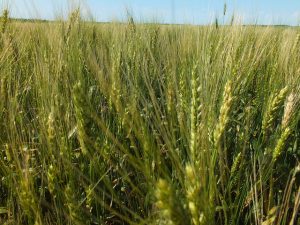Benefits and risks of increasing organic yields
 Photo credit: USDA NRCS South Dakota
Photo credit: USDA NRCS South Dakota
In conventional agriculture, increases in yields are largely due to increased use of synthetic pesticides and fertilizers and thus have come with a number of negative side effects. More recently, there has been a push to increase yields in organic agriculture but there has been little assessment of potential unintended consequences. Now, a new study published in the journal Agronomy for Sustainable Development aimed to assess the potential costs and benefits associated with increasing yields within organic agriculture. The researchers identified the need for increased soil fertility, increased pest, weed, and disease control, and improved livestock feeding and breeding as the primary areas where changes could be made to reduce crop and livestock losses and thus increase yields. In each of these areas, they reviewed the potential impact of yield-improving practices in these areas on biodiversity, greenhouse gas emissions, nutrient loss, animal health and welfare, human nutrition and health, and profitability. Overall, their analysis suggested that organic compliant efforts to increase yields were “unlikely to produce negative side effects and therefore should be a high priority.” The study also highlighted which areas are more likely to result in tradeoffs. For instance, increasing nitrogen inputs is more likely to have negative unintended consequences whereas improving pest control by supporting beneficial predators is virtually risk-free.


